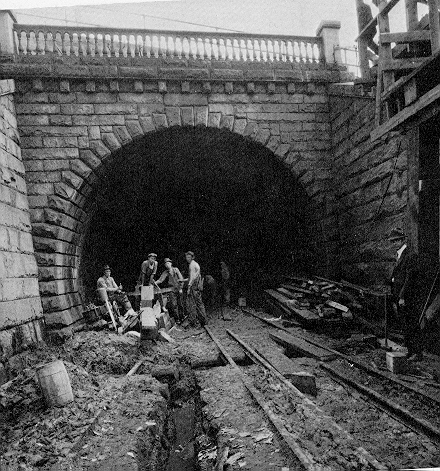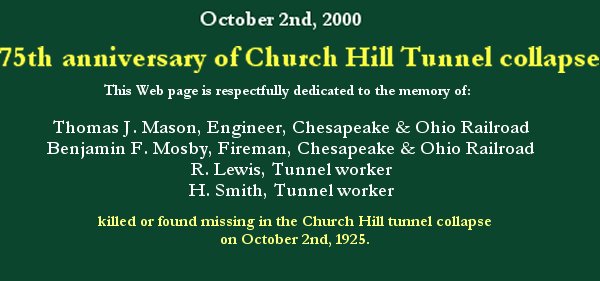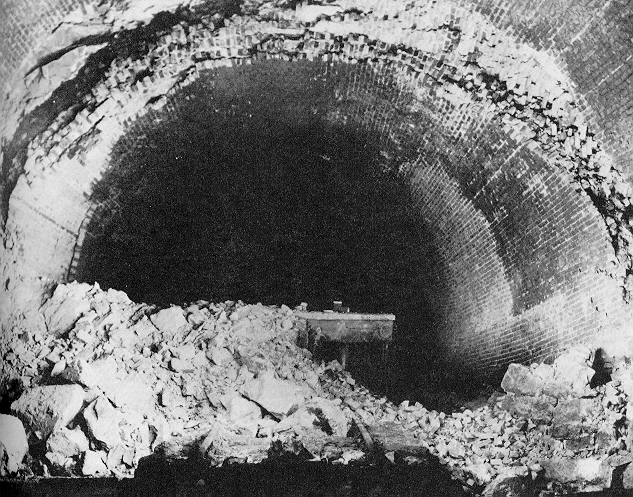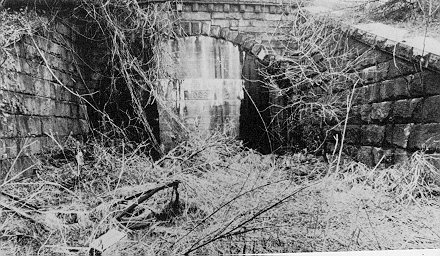
Entrance of the Church Hill Tunnel in 1925 during refurbishment works, a few days before the collapse. (P. O'Keefe Collection)




| Date | Location | Casualties / Damages |
| 1873, Jan. 14th | East Broad Street (Facing St. John Church) | 0 (?) / 1 house. |
| 1873, Dec. 11th | 26th Street | 1 (Xenophilius Frazier, tunnel worker) / none. |
| 1925, Oct. 2nd | Jefferson Park | 3 (maybe 4) railroad and tunnel workers. / Tunnel collapsed on 200 feet. |
| 1962 | Jefferson Park | 0 / Portion of the park, near the buried train. |
| 1988 | 29th Street | 0 / 1 tennis court and 2 houses. |
| 1998 | East Marshall Street | 0 / 1 pharmacy building. |
